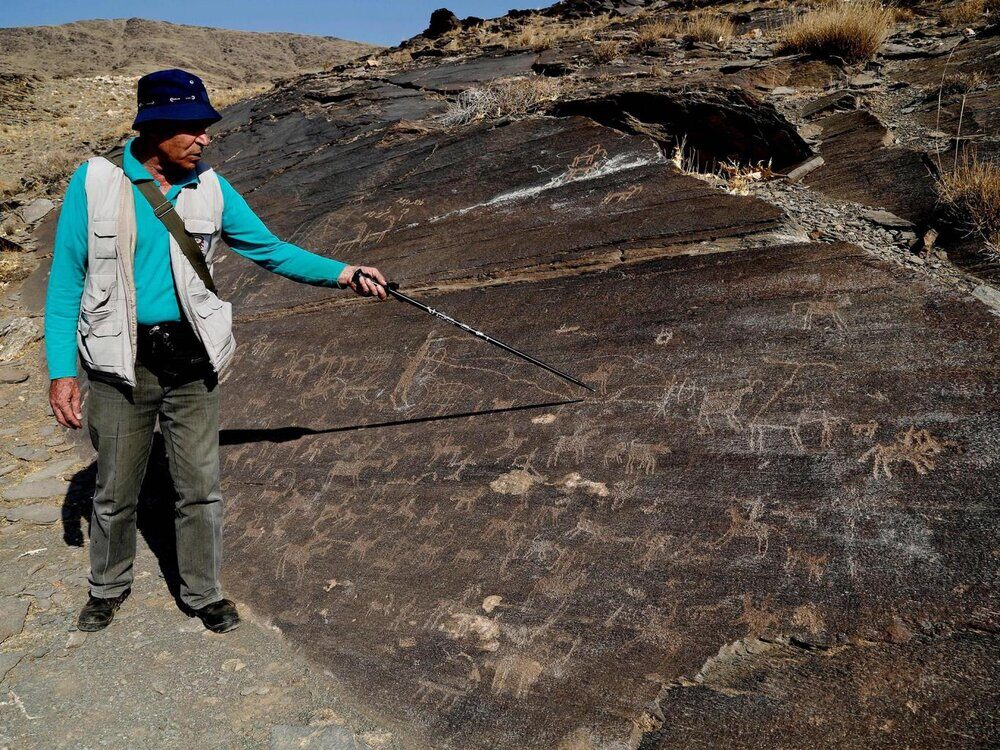
Having a considerable potential to become a UNESCO World Heritage, the site was named a common cultural heritage between the two provinces of Isfahan and Markazi in 1389 (Mar. 2010 - Mar. 2011), the report said.
It embraces countless petroglyphs from prehistorical times to the (early) Islamic eras, yet, over the past couple of years, some local entities have issued mining licenses and allowed shepherds to graze their livestock there, the news agency said.
According to a local tourism official, currently, mines operations are a serious threat of destruction for this area as miners demolish that landscape that contains ancient petroglyphs to obtain resources for silica (the element needed to make glass)... and they turn them into rubbish.
In 2020, a prehistorical petroglyph, which bears Pahlavi script written by ordinary people of the time, was found during an archaeological survey in Teymareh. "This is the sixth petroglyph, engraved with Pahlavi script, which has so far been found in the highlands of Teymareh. And the petroglyph is estimated to date back to 2,200 years ago," according to Iranian archaeologist Mohammad Nasserifard.
Nasserifard had earlier proposed a bold hypothesis on a variety of petroglyphs that are scarred in the region, saying "some prehistorical residents of the Iranian plateau migrated to the Americas." His assumption is based on evidence from similarities between the petroglyphs and cave painting symbols in central Iran and the ones found in the Americas.
"Appearance similarities, artistic styles, and uniform themes of ancient petroglyphs and cave paintings of this land (Iran) reveal many missing links in human history and arts one of which is the resemblance of ancient artifacts in Iran with ones found in the American continent," Nasserifard suggested.
In March 2020, a team of entomologists and archaeologists concluded that a previously-founded petroglyph showcases a six-limbed creature with the head and arms of a praying mantis. The rare 14-centimeter rock carving was first spotted in the Teymareh rock art site during surveys between 2017 and 2018, but could not be identified due to its unusual shape.
Experts believe that prehistoric rock art provides insights into past eras and cultures as archaeologists classify the tools for the carvings by specific eras Incising tools include flint, metal, or thigh bones of hunted prey.



Now let's wait for the land claim.